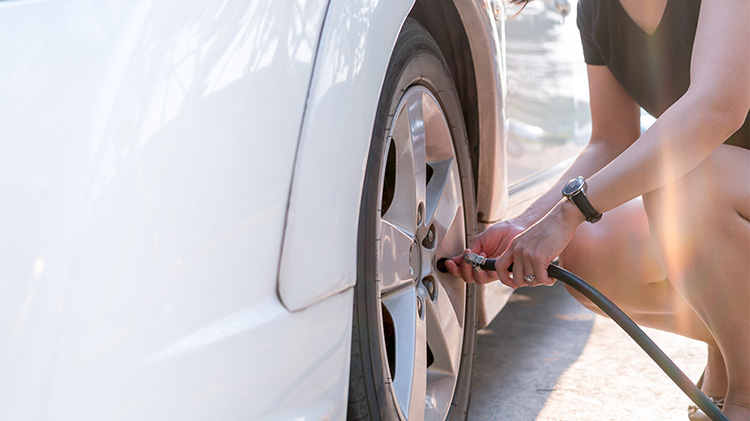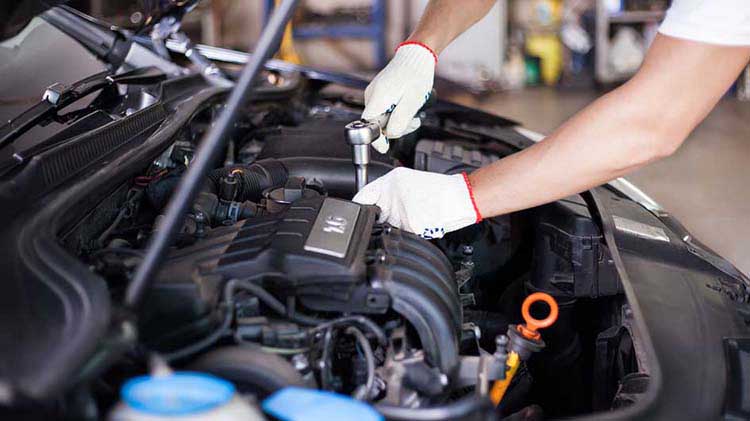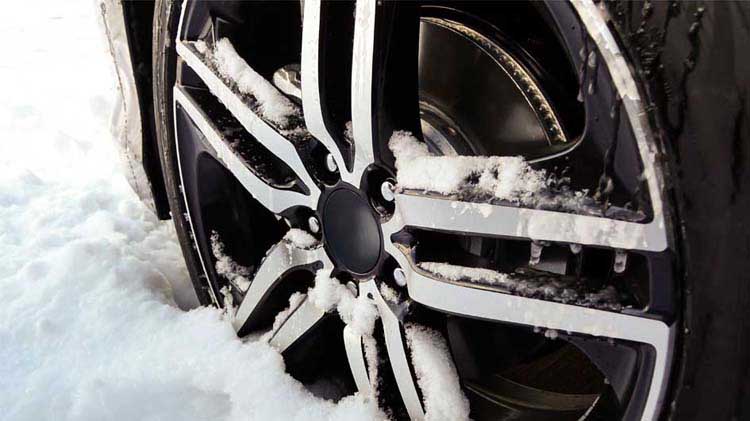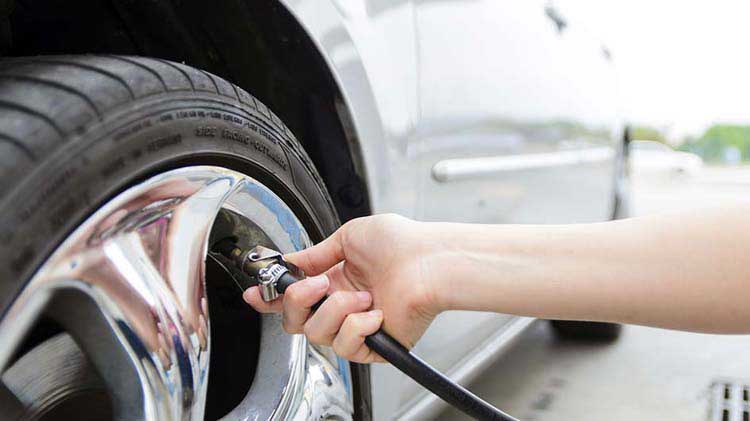Tire maintenance, safety and care
Yes, you do need to learn how to take care of your tires. These seven simple tire maintenance tips could take just minutes to complete.
1. Conduct a visual tire inspection
Look for signs of tire wear, a flat tire or worn parts. Here are some problems to consider looking for during your next visual inspection:
- Over inflation — an excess amount of air pressure can create uneven wear on the center of the tire tread instead of being evenly distributed across the tire. The extra air pressure can cause only the middle section of the tire to make contact with the road and wear down faster than the edges.
- Under inflation — not having enough air in your tires can wear down the outer edges faster, with less wear in the middle.
- Single edge wear — if your wheels are out of alignment, this can cause tread to wear on a single edge of the tire.
- Erratic tread wear — if the wheel is out of balance, or shock absorbers or other suspension components need to be replaced, your tire could tread randomly. This is also known as cupping.
- Sidewall raising — if one of the belts in the tire well has separated from the other, a part of the tread or sidewall will be raised.
2. Note the details of your vehicle's tires
If you open the driver's side door and look on the door jamb, you might see a sticker; that's where most vehicles supply the manufacturer's recommended tire pressure and the measurements for tire size and vehicle overall weight capacity. If you're checking your tire pressure and unsure what the goal is, check there or your owner's manual. While there is likely a number listed on your tire’s sidewall, it indicates the maximum air pressure the tire can hold rather than the recommended amount.
3. Learn how to use a tire gauge
In general, tires lose about 1-2 psi (pounds per square inch) per month and if they're underinflated your gas mileage may suffer. A tire gauge can help you measure your tire’s pressure and let you know if your tire needs more air. Here's how to use a tire pressure gauge.
Tire pressure can decrease as weather temperatures drop, or when the car hasn’t been driven for a while. If you leave your car undriven for an extended time, check the tire pressure before you drive.
4. Understand your vehicle's low-tire pressure alert
There can be all sorts of sensors — low fuel and battery to name just a couple — that your vehicle offers up when it needs some attention. All 2008 and newer vehicles have a monitoring system that issue an alert when the tire pressure on one or more tires falls below 25 percent of its recommended psi. The light is a nearly encircled exclamation point. When it comes on, check the psi of each tire and fill to the recommended level. Your vehicle may identify which tire has low pressure and some dashboards might even display each tire’s measured psi.
5. Learn a little (or a lot) about your spare
Sometimes referred to as a donut, a spare tire is designed to help get you out of a pinch — if you've gotten a flat or a tire blows out and you need to get your car home or to a repair shop. That's why it's often smaller than your vehicle's traditional tires. A spare tire isn't designed to be a permanent replacement and may even have miles-per-hour speed limitations. Spares are typically located either in the trunk, under the rear of the vehicle or on the exterior. A spare usually includes the jack to help take off the old tire and attach the new one. Even if you have Emergency Roadside Service, knowing where your spare is and how it works can help you in case you're somewhere where you can't access a professional and need to fix your vehicle quickly. Just like the tires on your vehicles, spares can also deflate over time or as weather conditions change. Try to occasionally check your spare tire’s psi so if you are ever in need, your spare can be relied on until you are able to get a replacement tire.
6. Check your tire tread depth
Tires have a life span, which can depend on various factors including driving habits and road conditions. Consumer Reports conducted tire treadwear testing that found the average lifespan of a tire is 70,000 miles. Being aware of your tire tread depth is an integral part of how to take care of tires. Your tires may have built-in treadwear indicators (wear bars), which are raised bars in the tire grooves that become visible over time as the tire tread wears down indicating the need for replacement.
You can also check your tread depth using the coin test. Simply insert a penny or quarter heads down, into a tread. If the tire covers the top of the head, your tire has enough tread depth. When the top of George Washington’s head is even with the tread, it’s a good time to start looking for replacement tires since you only have some grip, 4/32 of an inch, left for bad weather conditions. When you can see the space above George's head, your tread is worn down to 2/32 of an inch and it’s time for a new tire.
7. Put tire rotation on your to-do list
Proper tire maintenance also includes regularly rotating your tires. Unless your vehicle is an outlier with differently sized front and back wheels, your tires typically need to be rotated every 5,000 to 8,000 miles, according to Consumer Reports. To help evenly distribute wear and tear, the front ones need to go on the back and the back ones need to move to the front. When rotating your tires, consider asking your mechanic to check your tire alignment and the inflation pressure of your tires, too.
Watch the video below to learn more about keeping up with your tires.





